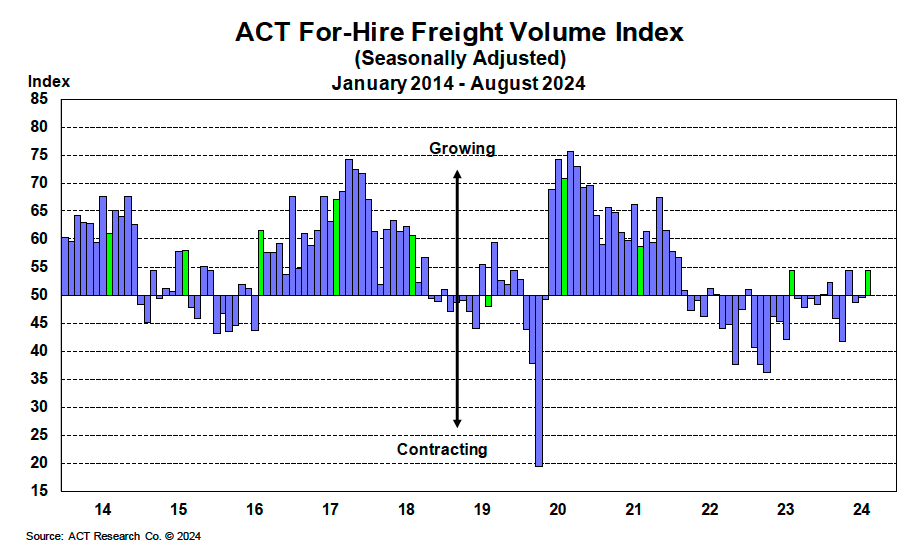The surge in economic activity has led to a significant increase in the amount of freight that needs to be transported. **Freight volume** is a key indicator that reflects the total quantity of goods, both imports and exports, moving through the transportation sector. In fact, nearly every physical product produced or sold within the U.S. economy passes through the commercial vehicle (CV) market.
**Why does freight volume matter?**
Understanding freight volume trends is crucial for businesses, regardless of the economic climate. It allows companies to anticipate challenges and seize opportunities effectively. Shippers are the ones who own or supply the goods, while carriers transport them, with brokers acting as intermediaries. The flow of freight among these stakeholders directly influences how they operate. Having accurate data on freight volume helps businesses plan more efficiently and make informed decisions about their future strategies.
A helpful way to visualize the balance between supply and demand in the truckload (TL) market is by using the pendulum analogy. When demand outpaces available capacity—such as when there's a shortage of drivers or tractors—the pendulum swings in favor of fleets, leading to higher freight rates. Conversely, if supply grows faster than demand, the pendulum shifts toward shippers, causing rates to drop. This cycle of fluctuation makes it essential for long-term businesses to adapt to short-term changes in freight demand.
**How is freight volume measured?**
For many companies, internal data can be limited, and obtaining broader market insights often comes at a high cost. To address this, ACT Research collects confidential data from a wide range of TL carriers, especially small and mid-sized ones, which handle a large share of freight in North America. The information gathered includes:
- Trends in business volume
- Market price trends
- Expectations for vehicle sales and purchases
ACT’s For-Hire Trucking Index provides a comprehensive view of transportation and CV market trends by surveying carriers. Additionally, ACT partners with Cass Information Systems, Inc., the largest processor of freight billing in the U.S., to gain deeper insights into current market conditions. Using the **Cass Freight Index®**, which tracks freight volumes and spending, and the **Truckload Linehaul Index®**, a pricing indicator, ACT can forecast future freight demand accurately.
**What is ACT saying right now about freight volume?**

As of October 2024, freight volumes have remained relatively stable throughout the year, but the year-over-year comparison shows positive growth. The ACT For-Hire Trucking Index averaged **48.8** in the first half of 2024, up from **42.8** in the same period last year. Despite some consumer pressure, real U.S. retail sales have increased by **1.8% year-to-date (YTD)**, supported by ongoing disinflation. Moreover, intermodal and import volumes are trending upward, contributing modestly to overall surface freight volumes.
While private fleet insourcing may have reduced some demand in the for-hire market, recent declines in U.S. Class 8 tractor sales suggest a slowdown in private fleet expansion.
**Freight Volume Forecasting**
When predicting the truckload and less-than-truckload markets, ACT Research relies on two primary metrics to gauge industry demand:
- **Cass Freight Index® - Shipments**: This metric measures the number of freight shipments handled by Cass Information Systems across North America. With over $44 billion in annual freight transactions, Cass is a reliable source for tracking shipper activity.
- **ACT Freight Composite Index**: This index estimates the total freight volume hauled by different sectors, developed by ACT Research.
Both metrics reflect consumer demand driving the need for freight movement. They provide valuable insights into expected freight volumes over the next 6 to 36 months, helping to maintain a balanced view of supply and demand when combined with ACT’s capacity metrics.
To understand how freight volume might evolve in the future, including detailed analysis and forecasts for truckload, LTL, and intermodal markets, visit ACT’s freight and transportation forecast.
Electronic Product Accessories
Electronic Product Accessories,Medical Hanging Ring Accessories,Stainless Steel Earphone Shell Parts,Stainless Steel Keyboard Accessories
Dongguan New Decoration Material Technology Co., Ltd. , https://www.xsjmim.com